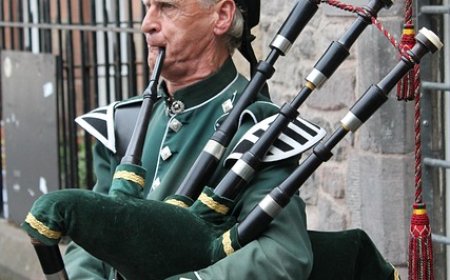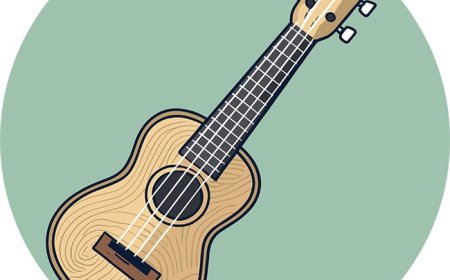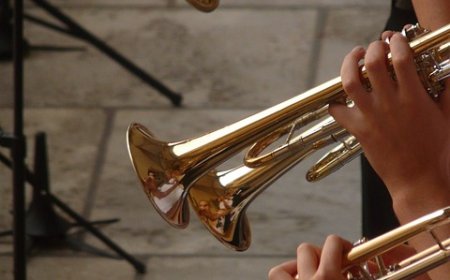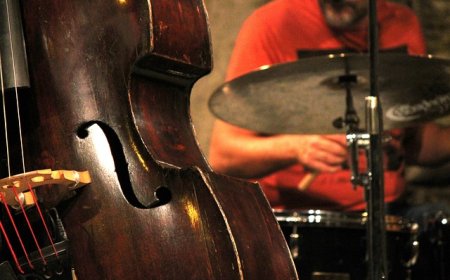Erhu Facts for Students | Discover the Chinese Two-String Fiddle
Explore the erhu—a traditional Chinese string instrument with two strings and deep emotion. Learn how it works, its parts, history, famous players, and how it’s played.
🎼 All About the Erhu
🥇 Introduction
The erhu is a traditional Chinese bowed string instrument with only two strings, yet it can produce some of the most expressive and emotional sounds in music. From joyful dances to heartbreaking melodies, the erhu is known for its voice-like tone and is used in solo performances, Chinese orchestras, and film soundtracks. It's a fascinating blend of simplicity and power, loved by both beginners and expert musicians.
🎶 What Is an Erhu?
The erhu is a two-stringed instrument played with a bow, similar in function to a violin but quite different in shape and sound. It belongs to the huqin family of Chinese instruments and is sometimes called the "Chinese two-string fiddle."
The erhu has:
-
A long, straight neck with no fingerboard
-
A small, round or hexagonal resonator covered in python skin
-
A bow placed between the two strings
Unlike a violin, the bow is not held separately-it's attached between the strings, so players push and pull the bow to switch strings. The erhu is known for its vocal-like sound, often compared to a human voice crying, laughing, or singing.
🧩 Parts of the Erhu
Although the erhu is simple in appearance, each part is carefully crafted:
-
Neck (Qin Gan) - A long wooden rod made from hardwood like rosewood or sandalwood
-
Strings - Two metal strings tuned a fifth apart (usually D and A)
-
Resonator (Qin Tong) - A small, drum-like body that amplifies the sound
-
Python Skin - Stretched over the front of the resonator, giving the erhu its unique tone
-
Bridge - A small piece that lifts the strings above the skin
-
Tuning Pegs - Wooden pegs used to tighten or loosen the strings
-
Bow (Gong) - Made of bamboo and horsehair, placed permanently between the two strings
-
Qianjin - A loop of string that acts like a nut, dividing the vibrating part of the string
Despite having no fingerboard or frets, players press the strings against open air, using finger pressure and precise positioning to change pitch.
⚙️ How Does the Erhu Work?
The erhu works by moving the bow back and forth between the two strings. The player presses on the string with their fingers-not against wood, but against air. When the string is pressed and bowed, it vibrates, and that sound travels through the bridge, through the python skin, and into the resonator, which amplifies the sound.
The result is a rich, resonant, and often emotional sound, perfect for sad melodies, joyful folk tunes, or even modern film scores. Because there are only two strings, the erhu is perfect for melody rather than chords.
📜 History of the Erhu
The erhu has a long history that goes back over 1,000 years, likely evolving from earlier instruments brought to China through the Silk Road from Central Asia.
The name "erhu" means "two-stringed fiddle":
-
"Er" = two
-
"Hu" = short for huqin, a family of bowed instruments
During the Song Dynasty (960-1279), the erhu began to appear in folk music. By the 20th century, it became a central instrument in Chinese classical music, opera, and modern ensembles.
Today, the erhu continues to grow in popularity around the world, being used in Western orchestras, film music, and cross-cultural collaborations.
🥁 Famous Erhu Players
These artists have helped the erhu become famous in China and around the world:
-
Liu Tianhua - Early 20th-century composer who wrote classical works for the erhu
-
Min Huifen - Known for emotional playing and powerful stage presence
-
Jiang Jianhua - Played erhu with world orchestras and on international stages
-
Ma Xiaohui - Performed in the Oscar-winning movie Crouching Tiger, Hidden Dragon
-
Chen Jun - A modern master who mixes traditional and modern styles
-
Karen Han - An erhu soloist featured in Hollywood movie soundtracks
🎶 Learning to Play the Erhu
The erhu is challenging but rewarding. It teaches great listening skills, fine motor control, and emotional expression. Beginners start by learning:
-
How to hold the erhu between the leg and shoulder
-
Moving the bow across the inner and outer strings
-
Pressing the string with the left hand to make different pitches
-
Practicing scales and traditional melodies
-
Creating vibrato, slides, and glissandos for expression
Many students begin with folk songs or melodies from Chinese opera and move on to more complex solo pieces.
😄 Fun Facts About the Erhu
-
The erhu only has two strings, yet it can play over three octaves!
-
It's sometimes called the "Chinese violin", though it has no fingerboard.
-
The bow is permanently placed between the strings, so it's never removed.
-
Erhu players use slides and vibrato to mimic the human voice.
-
Some erhus are made from rare woods like aged rosewood or sandalwood.
-
The erhu can sound happy, sad, or spooky, depending on how it's played.
-
It has been featured in movies, video games, and orchestras around the world.
👧 Kid-Friendly Summary
The erhu is a two-string instrument from China that sounds a lot like a singing voice. It's played with a bow that sits between the strings. Musicians use it to play beautiful music in Chinese stories, shows, and concerts. Even though it's simple, it can play very emotional and exciting music!
📚 Vocabulary Words
Erhu – A two-stringed Chinese instrument played with a bow
Resonator – The hollow body that helps make the sound louder
Python Skin – The animal skin stretched over the resonator to give the erhu its sound
Bow – The curved stick with horsehair used to play the strings
Qianjin – A loop on the neck that helps support the strings
Vibrato – A shaking motion to add emotion to the sound
Glissando – A sliding motion between notes
Huqin – The family of Chinese bowed string instruments
❓ Interactive Quiz (8 Questions)
1. What country is the erhu from?
A. Japan
B. India
C. China
D. Korea
2. How many strings does an erhu have?
A. One
B. Two
C. Four
D. Six
3. What is stretched over the erhu’s resonator to help make sound?
A. Goat skin
B. Cowhide
C. Plastic
D. Python skin
4. What makes the erhu different from a violin?
A. It has four strings
B. It has no bow
C. It has no fingerboard
D. It’s made of metal
5. What is the bow made of?
A. Plastic
B. Wire
C. Bamboo and horsehair
D. Bone and silk
6. What does the name “erhu” mean?
A. String dragon
B. Singing bow
C. Two-string fiddle
D. Small harp
7. Who was a famous erhu player featured in movie soundtracks?
A. Liu Tianhua
B. Karen Han
C. Yo-Yo Ma
D. Ravi Shankar
8. What kind of sound is the erhu known for?
A. Loud and harsh
B. Smooth and vocal
C. Flat and soft
D. High and screechy






















































